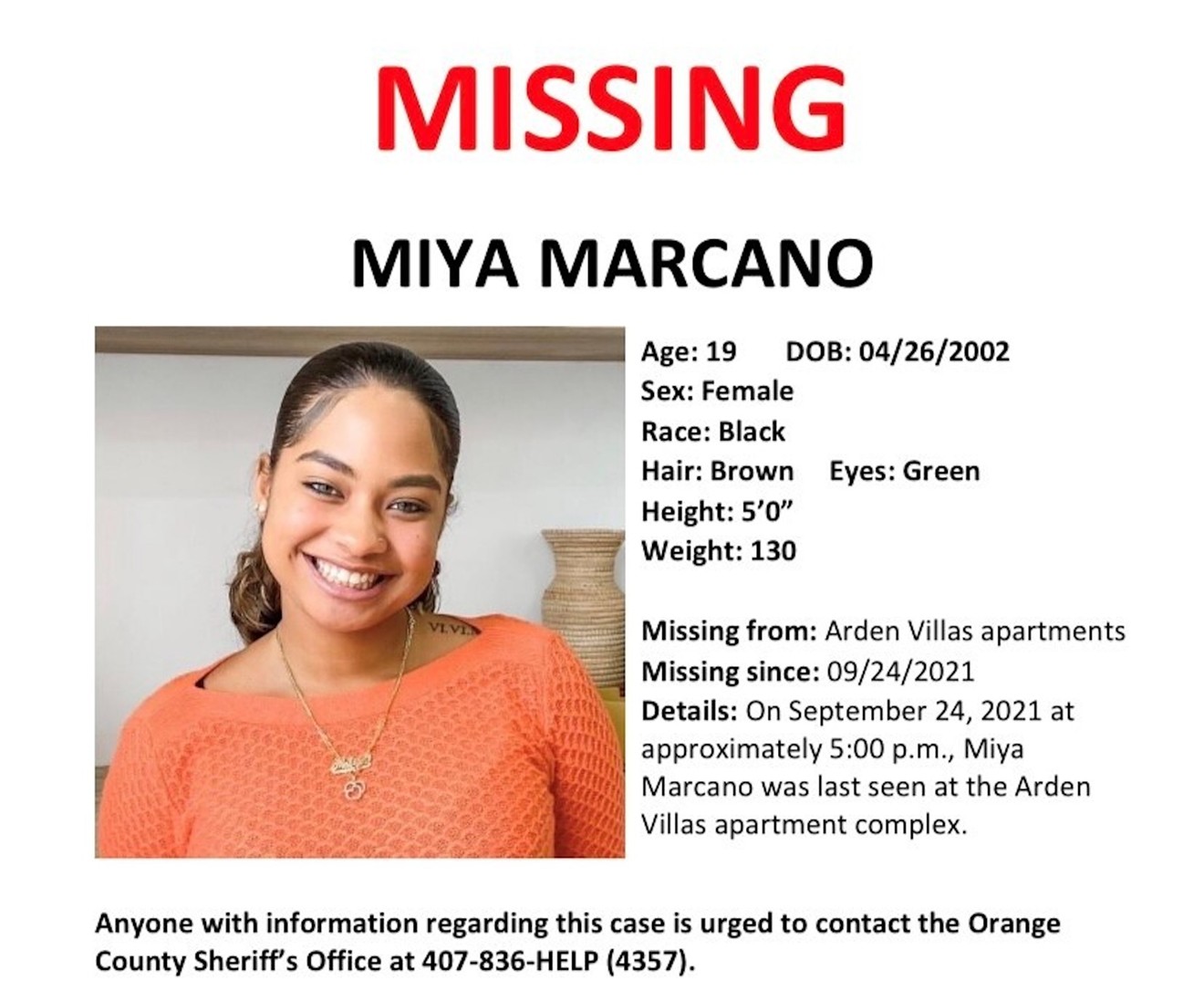But as Petito's case continues to unfold and gain traction, some are noting that other missing people – particularly those who are Black, Indigenous, or people of color – don't have their trails traced with the same zeal.
It has been five days since 19-year-old Miya Marcano, a student at Valencia College in Orlando, missed her flight home to Fort Lauderdale and suddenly stopped answering her phone. The Orange County Sherriff's Office states that her whereabouts are still unknown.
"All we ask you is help us bring Miya home," Marcano's grandmother, Joysue Thompson, told WESH 2 News during a vigil for her granddaughter. "Bring her home safe, just drop her off and let us know where she is and we'll pick her up – just bring her home."
Marcano is just one of nearly 90,000 Black women and children reported missing across the U.S. in the past year, according to the National Crime Information Center. Though Black women and children make up more than one-third of all missing women in the nation, research has shown that missing white women and children garner far more media attention.
As of Wednesday afternoon, the hashtag #gabbypetito had a whopping 1.2 billion views on TikTok, while #miyamarcano had only 660,000. Similarly, on Instagram, posts tagged #gabbypetito numbered 17,300, while #miyamarcano logged just shy of 500.
Before Gabby Petito, there was Natalee Holloway, Elizabeth Smart, Laci Peterson. Experts call this disparity in media coverage "missing white woman syndrome." In a 2016 study examining the phenomenon, sociologist Zach Sommers found that missing Black people were significantly underrepresented in news coverage compared to white people. The consequences, Sommer says, can be harmful.
"If we're only covering certain cases, we're by implication saying those are the cases that are important," Sommers, a Chicago-based lawyer who studies crime, tells New Times. "And I think that can be incredibly traumatizing for family members who have loved ones who have gone missing."
STILL MISSING: The red shirt (left) is what Miya Marcano was wearing when last seen on 9/24. She also had on jeans & a black hoodie.
— Orange County Sheriff's Office (@OrangeCoSheriff) September 28, 2021
On 9/27, person of interest Armando Caballero was found dead in an apparent suicide.
We're still searching for Miya.
Call 407-836-4357 w/ info pic.twitter.com/YkLGAQKPWb
Marcano was last seen around 5 p.m. on Friday, September 24, after clocking out of her shift at the leasing office of the Arden Villas Luxury Apartments near the University of Central Florida, where she also lives. She was wearing jeans and a black hoodie.
After Marcano missed her flight home to visit family, her relatives drove from Fort Lauderdale to Orlando. Since arriving at her apartment around 3:30 a.m. on Saturday, they’ve been searching for any clues to her disappearance and, along with investigators, have pleaded with the public for help.
The biggest break in the case came Monday when 27-year-old Armando Manuel Caballero, whom police had sought was a person of interest in the case, was found dead from an apparent suicide. Caballero was a maintenance worker at Marcano's apartment complex and had "inappropriately accessed" her apartment with a master key just minutes before she was last seen, according to the Orange County Sheriff's Office.
Caballero had also reportedly expressed a romantic interest in Marcano, but she had repeatedly rejected him.
The search for Marcano continues. On Tuesday, authorities and family members searched the woods near the Seminole County apartment complex where Caballero was found dead. Others distributed flyers with her photo and knocked on doors nearby.
On Tuesday evening, relatives held a vigil outside her apartment and prayed for Marcano's safe return.
Though Marcano's case is being covered by local newspapers and TV news stations, it isn't catching the national and international momentum Gabby Petito's did.
Sommers partly attributes the disparity in coverage to the "level of innocence" that society ascribes to young white victims. But aside from the racial component, he says, there's also a gender factor at play. For instance, the "damsel in distress" narratives that children grow up reading in fairytales are just one reason why Petitio's case attracted such intense interest.
"We hear about the princess that needs to be saved by a male knight in shining armor," Sommer says. "So when we hear a different version of it, which is a young woman who has gone missing and needs to be rescued by law enforcement that's disproportionately male, we can latch on to that story."
But Sommers emphasizes that Petito's case is tragic and worthy of coverage; it's not about drawing away attention from her story. In fact, Petito's father recently asked the public to pay other missing-person cases the same attention as his daughter's.
"It's not that we need to take away coverage from the Gabbys of the world," Sommer says. "It's just that we need to do a better job of covering a variety of types of folks and people who look different, and who come from different places and have different experiences, so that the coverage is just more equitable."












